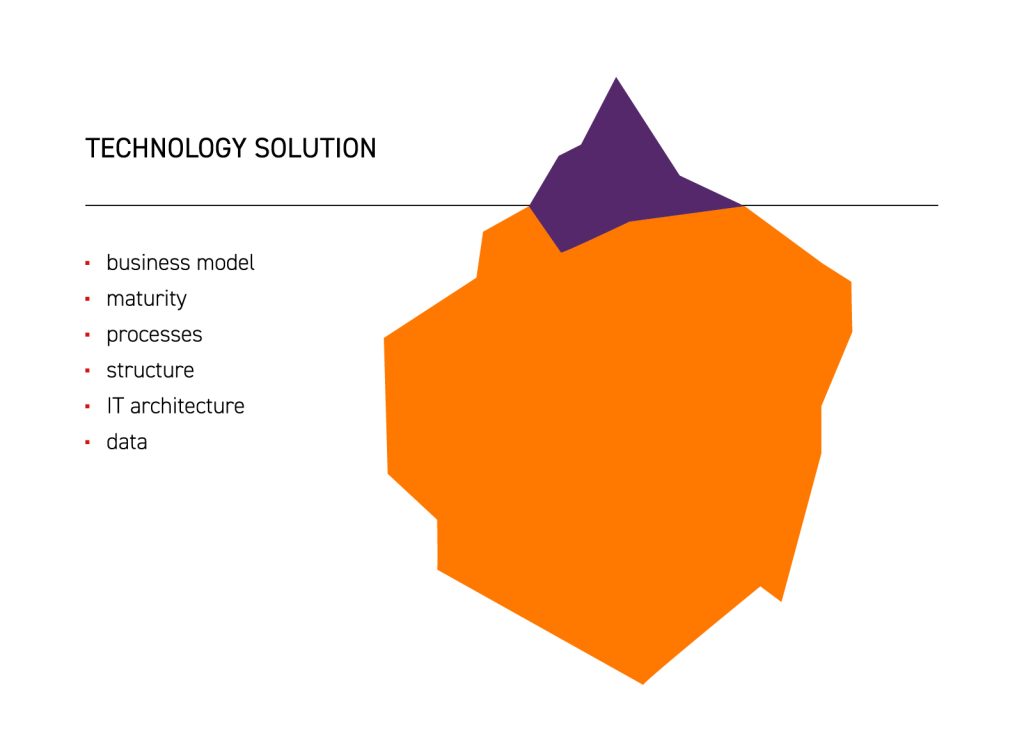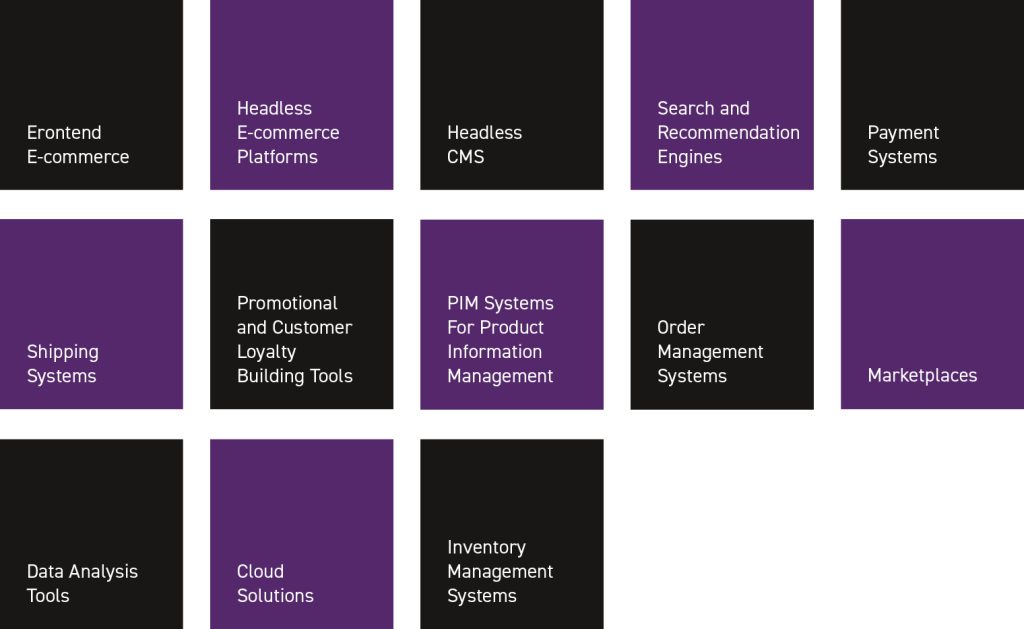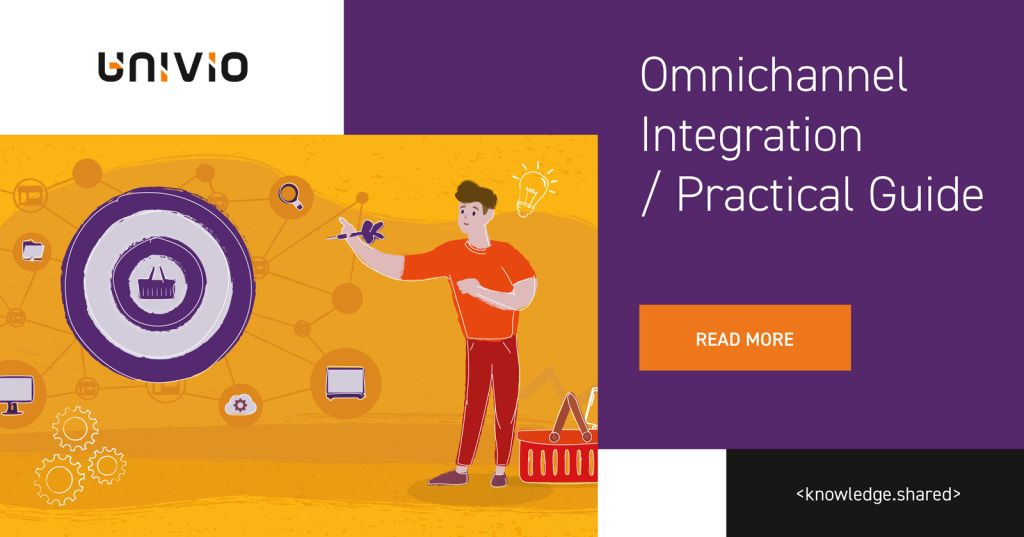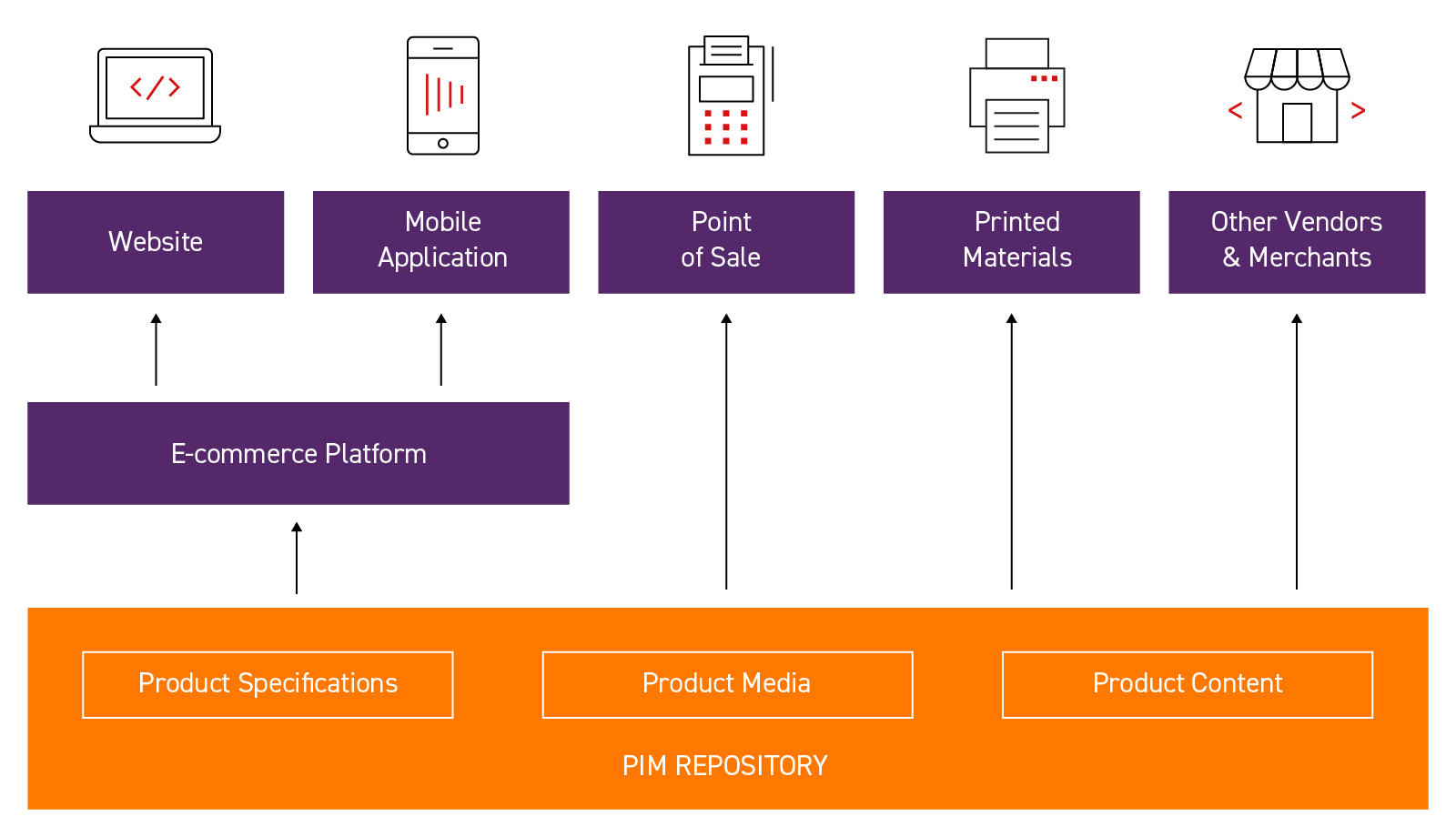Maximizing Customer Engagement: Proven Omnichannel Solutions for Today’s Businesses
Ever wondered how to be present and consistent across all customer interaction points? Omnichannel retail solutions tie together your online and offline presence, ensuring a seamless and personalized customer experience that is no longer optional but essential. This article provides a deep dive into how these solutions work, their importance in today’s market, and practical examples of successful strategies, guiding you through the omnichannel maze with clear, concise insights.
TL;DR
- Omnichannel e-commerce solutions integrate sales, marketing, and customer support to provide a consistent and personalized experience across all channels, enhancing customer engagement, satisfaction, and loyalty.
- Key components of effective omnichannel solutions include data integration and analysis, robust technology infrastructure, modern B2B platforms, with AI and mobile optimization playing pivotal roles.
- Continuous improvement and customer engagement, informed by metrics such as Net Promoter Score and Customer Satisfaction Score, are vital for the dynamic success of omnichannel strategies.
Understanding Omnichannel Solutions
Imagine walking into your favorite coffee shop. The barista greets you by name, remembers your usual order, and even asks about the book you mentioned you were reading last time. This level of personalization and consistency leaves you feeling valued. Now, translate this experience to the online world — that’s omnichannel solutions for you! They can provide customers a consistent, seamless, and personalized customer experience, regardless of the channel your customers choose to interact with your business.

They’re not just about being present on multiple sales channels; they’re about integrating these channels to offer a unified customer experience, thereby boosting customer engagement and satisfaction. By implementing customer relationship management strategies, businesses can ensure a seamless and personalized experience across all sales channels.
The cohesion in the seamless customer experience provided by omnichannel strategies is driven by the strategic use of data, technology, and people.
Definition of Omnichannel Solutions
Omnichannel solutions can be defined as the synergetic amalgamation of sales, marketing, and customer support that offers customers a consolidated and seamless shopping experience, across all channels. This is unlike multichannel approaches, where each channel operates independently, often leading to a disjointed customer experience. An omnichannel strategy, on the other hand, synchronizes these channels to allow data flow and coordination, enhancing customer experience with brand consistency.

Imagine you’re shopping online for a new pair of shoes. You add a pair to your cart but decide to check them out at the physical store before making a full purchase online. With an effective omnichannel retail solution, the sales associate at the physical store can instantly access your online cart, assist you with your purchase, or even suggest complementary items based on your online browsing history. Attaining such uniformity hinges on the behind-the-scenes integration of the organization’s distribution, promotion, and communication channels.
Retail and e-commerce industries are at the forefront of adopting these solutions to provide consistent buying experiences to loyal customers across various operational channels.
Importance of Omnichannel Solutions
The digital transformation brought about by the advent of smartphones and social media platforms has significantly elevated customer expectations for accessibility and seamless experiences across channels. These heightened expectations necessitate the adoption of an omnichannel strategy. In fact, it’s critical for businesses to adopt omnichannel retail solutions, as nearly 70% of customers want to interact with brands on more than one channel.

The importance of omnichannel customer engagement goes beyond just meeting customer expectations. It plays a critical role in building customer loyalty, with companies that have a strong omnichannel strategy seeing a higher retention rate and increased customer lifetime value. By providing multiple communication and purchase options to customers, omnichannel solutions increase the likelihood of repeat purchases and brand loyalty. They also help businesses understand their customers better, tailor offerings, simplify purchase processes, and increase customer satisfaction, potentially reducing churn and increasing customer lifetime value.
The Role of Technology for Effective Omnichannel Commerce
Having grasped the concept and importance of omnichannel solutions, we can now explore their key components. However, it is important to note that technology alone is not sufficient to implement an omnichannel strategy, although it is essential. The first step is always to define business goals and needs, examine processes, and determine what changes need to take place at the organizational level to implement an omnichannel approach.
Is the goal increased customer retention? Growing sales? Attract new customers? Build competitive advantage? Whatever the goal, it is important to define it and plan how to achieve it through the sales and marketing channels available to you.

Once goals and needs are defined and processes are mapped, you can begin to look at technology solutions to help implement an omnichannel approach.
At the same time, it is important to remember that every organization has a different starting point — some are just beginning to implement omnichannel, while others need to upgrade tools and solutions to make the omnichannel model more efficient and effective. Companies also have different levels of digital maturity, operate under different business models, and face different challenges. All of this determines the choice of appropriate solutions for an omnichannel strategy.
The Key Components of Effective Omnichannel Retail Solutions
It’s impossible to cover every omnichannel retail software, so we’ve broken these solutions down into categories to make it easier for you to find top omnichannel solution providers.
Flexible IT Architecture
A robust technology infrastructure is indispensable for the implementation of an effective omnichannel strategy.
One of the key retail omnichannel solutions is a flexible IT architecture. One popular concept is Composable Commerce, an approach that combines independent components and services (microservices) to create a comprehensive system in which what the customer can actually see is separated from the back end. In composable commerce, the system consists of several independent components that can be combined in any configuration to meet individual business needs and requirements.
In the Composable Commerce approach, each module is an independent, easily scalable component that can be integrated with other modules to create a cohesive solution. As a result, Composable Commerce enables greater flexibility, speed, and innovation in building e-commerce platforms and opening new online sales channels, resulting in faster time-to-market.
There are many elements to a composable architecture, some of which are described below.

You can read more about Composable Commerce, MACH and headless commerce, here.
B2B and B2C E-Commerce Platforms
Today, having your own B2B or B2C platform is an essential part of building an omnichannel strategy. What’s more, as the data shows, the value of B2C e-commerce sales is growing year after year, and today it’s hard to imagine life without online shopping.
The situation is no different in the B2B sector, where business customers expect similar conveniences as in everyday shopping. Already, 49% of B2B dollars are spent in an online store, and 69% of buyers plan to use digital sales channels in the future.
What are the key considerations in the selection of an e-commerce platform for an omnichannel model?
Make sure the platform has a user-friendly interface and navigation, and that it can be easily integrated with other solutions, such as payment gateways, inventory management systems, or logistics systems. For B2B sales, confirm the presence of features that support salespeople, such as creating advanced customer segments, personalized offers, creating multiple shopping carts, or placing orders on behalf of customers, etc.
Examples of e-commerce platforms for the omnichannel model include
- Adobe Commerce — a leading online commerce platform that powers more than 300,000 online stores worldwide.
- ONe — a ready-to-use e-commerce platform designed for B2B customers, with many features to streamline the work of sellers.
- Magento 2 — a well-known platform that has been supporting B2B and B2C sales for years.
- Univio.Commerce — an e-commerce system designed to support highly complex business processes, which is especially important for manufacturers and distributors.
- Commercetools — one of the leading e-commerce platforms, appreciated for its innovative architecture designed according to MACH.
- Spryker — a microservices-based e-commerce platform that enables the integration of multiple touchpoints.
Cloud Services
Cloud services are an important omnichannel retail solution. The omnichannel model requires technologies that can handle periodic spikes in site load, such as during Black Friday and other sales periods. Leading cloud service providers such as AWS, Azure, and Google Cloud offer a comprehensive suite of services to support online and offline sales channels.
Companies can use cloud capabilities for omnichannel strategies in a variety of ways, depending on their needs.
- Infrastructure as a Service (IaaS) — With compute and storage resources, businesses can seamlessly scale their operations without significant investment in physical infrastructure.
- Platform as a Service (PaaS) — allows you to focus on application delivery and management, so you don’t have to worry about resource procurement, sizing, software maintenance, etc.
- Cloud-based machine learning services — enabling developers to build and run applications using advanced machine learning algorithms that can be used in an omnichannel model to create recommendation systems or customer segmentation.
- API management — Cloud providers also offer tools for creating and managing application programming interfaces (APIs), which are essential for the smooth flow of data between channels and systems in an omnichannel model.

System Integration
And while we’re on APIs and data flow between systems, it’s worthwhile to talk about effectively integrating systems that play a critical role in an omnichannel strategy. After all, omnichannel selling is all about creating a better customer experience and consistency across all the channels used, and modern system integrations can ensure this. What’s more, a modern integration layer makes it easy to add new sales channels (e.g. on online marketplaces platforms).

A one-size-fits-all systems integration solution for omnichannel is difficult to define because every company has slightly different system characteristics. It is not uncommon to have to consider the need to integrate legacy systems with newer platforms, industry requirements, or the complexity of business processes.
Examples of popular integration solutions that can be customized to meet a specific company’s needs include
- MuleSoft — a well-known integration platform used by many companies around the world and a long-time Gartner leader.
- Unilinker — a turnkey integration platform that enables rapid integration of key e-commerce business processes, including PIM, marketplace or ERP systems.
- Apache Camel — a flexible and scalable open-source integration platform that accelerates the application integration process with out-of-the-box integration patterns and an intuitive API.

Business Intelligence Tools
In today’s data-centric era, customer data has become as valuable as oil. It fuels omnichannel solutions by providing valuable insights into customer behavior, preferences, and purchase history, enabling companies to deliver personalized experiences. Business intelligence (BI) tools provide easy-to-use dashboards, reports, tables, charts, and other interactive forms of data visualization. They allow you to integrate, process, and transform massive amounts of data from multiple sources into valuable information.
You can analyze online and brick-and-mortar sales in detail, study individual product categories, discover relationships, draw conclusions, and better understand customer needs. As a result, you can build a positive brand image, develop sales channels accordingly, and optimize the budgeting process and marketing strategy.
Examples of popular business intelligence tools include
- Microsoft Power BI — a powerful and comprehensive analytical tool that integrates with other Microsoft products, making it a popular choice for companies that already use Microsoft services.
- Tableau — another tool known for its great data visualization capabilities, creating interactive reports to present complex data in an appealing way.
- Looker (now part of Google Cloud) — an exciting data analysis and mining tool that emphasizes simplicity and integration with Google Cloud data services.
Machine Learning and AI Systems
Tracking data is one thing, but today more and more companies are implementing solutions that use business artificial intelligence and machine learning to build competitive advantage through data. AI omnichannel retail solutions enable better sales planning across channels, faster creation of personalized offers, or better and more efficient customer service. However, this requires structured and collected data in one place, such as a data lake or data warehouse. This makes it possible to build models and test hypotheses relatively quickly using existing data.
What specific AI and machine learning solutions can be used in an omnichannel model?
- Predictive Analytics — based on historical data and other key parameters, these algorithms can, for example, predict sales in specific channels and tell you which customers are likely to leave.
- Recommendation Systems — these can help you reach customers more effectively across channels, increase the value of the shopping cart through cross-selling and up-selling, or create personalized offers and promotions.
- Dynamic Pricing — These systems automate price management across multiple channels by analyzing demand, product availability, and many other factors. This allows companies to ensure expected sales volumes while maintaining the highest possible margins.
- Chatbot AI — Artificial intelligence chatbots are one of the fastest-growing technologies today. They can play an important role in omnichannel customer experience solutions.
Chatbots will be particularly useful for improving customer service across channels — online store, social media, or email. They can be fed relevant information, such as the offer and price, so that the chatbot responds consistently and naturally to customers’ recurring questions. A big plus is the ability to add new information to the AI chatbot yourself.
Product Management System
Omnichannel means many different sales channels, and that means many places where consistent information and product data needs to reside. It’s difficult to imagine manually updating product data across all channels and other key systems, such as logistics.
Fortunately, Product Information Management (PIM) systems come to the rescue, making it possible to deliver complete and up-to-date product information to all sales channels, both offline and online.
All you have to do is complete or change the data in the system, and it is automatically uploaded to, for example, an e-commerce platform, marketplace, mobile application or business partner platforms. A big plus of PIM systems is the ability to add material in other languages, so the omnichannel model can be easily extended to foreign channels.

What to look for when selecting a PIM system for an omnichannel model?
Pay close attention to pricing and the level of functionality available in a given package. Also, important are the ability to integrate with other enterprise systems, ease of use, and long-term support from the platform vendor.
Some of the most popular product management solutions on the market include
- Pimcore — considered one of the best solutions in its class, allowing, among other things, flexible product management, convenient definition of user roles in the system, or easy integration with other systems. Recommended for more demanding users who want to develop an omnichannel strategy across multiple markets and brands.
- Akeneo — a reliable product information management platform with a user-friendly panel and a wide range of extensions. Solutions recommended for those who do not have very sophisticated needs or numerous product attributes.
- Ergonode — PIM as SaaS, which offers easy implementation, regular updates and scalability. The system also offers the flexibility to extend the data model and grow with the omnichannel.

Order Management System
Another critical omnichannel retail software is an order management system (OMS), which must combine information from multiple channels into a structured process to reduce errors and provide real-time order status to customers. OMSs also provide visibility into inventory levels, making it easier to maintain optimal sourcing. Another benefit is the optimization of warehouse and logistics teams.
It is important that the order management system reflects the specifics of the industry and is compatible with the company’s other systems.
Implementing Omnichannel Solutions: Best Practices
After examining the key components of omnichannel retail solutions and some leading providers, it’s time to delve into the effective implementation of these solutions. Successful implementation of omnichannel e-commerce solutions involves following some best practices, including:
- Creating unique content
- Segmenting customers effectively
- Selecting and optimizing channels
- Continuously improving and testing the strategy
Customer Segmentation
Customer segmentation is one of the initial steps towards the implementation of an effective omnichannel strategy. This involves grouping customers based on various criteria such as demographics, behaviors, and preferences. Effective customer segmentation processes begin with establishing clear goals, leveraging various data sources, employing multiple segmentation criteria, making informed decisions, and routinely revising the segmentation approach.
One example of effective customer segmentation comes from Starbucks. The company added 10 million digitally registered customers by engaging them with personalized offers, motivating them to order via the app and allowing customers to join the rewards program. This example illustrates how effective customer segmentation can lead to increased customer engagement and satisfaction.
Channel Selection and Optimization
Another instrumental step in the successful implementation of an omnichannel strategy is the selection and optimization of the right marketing channels for your customer base. This involves thorough audience research, leveraging data, trends, and algorithms specific to each platform.
In today’s mobile-first world, a mobile-first strategy is essential for effective omnichannel and marketing campaigns. Businesses need to focus on developing mobile apps as the central nexus of customer engagement, optimize content for desktop or mobile device usage to enhance user experience, boost search engine rankings, and address the growing base of mobile device users.
Continuous Improvement and Testing
A final yet equally important aspect of implementing an effective omnichannel strategy is the process of continuous improvement and testing. An omnichannel strategy is not a set-it-and-forget-it kind of deal. It requires ongoing evaluation, involving regular testing and adaptation, to remain effective against dynamic market conditions and competitive forces.
To gauge the success of an omnichannel approach, businesses should continuously monitor key performance metrics such as:
- Customer engagement
- Lifetime value
- Segment growth
- Satisfaction
- Net Promoter Score
- Customer Satisfaction Score
- Customer Effort Score
- Customer Churn Rate
This continuous loop of measuring, testing, and refining strategies ensures that they are meeting performance goals and delivering the desired customer experiences.
Each Omnichannel Solution Puzzle Will Be Different
We have not exhausted the topic of omnichannel solutions, but we have tried to describe the most important ones that are essential today for building an effective omnichannel strategy and increasing customer engagement.
Every company’s situation is different, so the specific solutions will also vary depending on the industry, business model, and level of digital maturity. If you’re wondering which omnichannel retail software will work best for you, contact us — we’ve been helping companies transform their sales and implement modern business models for more than 25 years.








